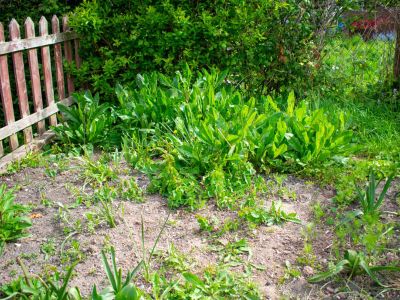How to Revitalize Vegetable Gardens
If you’ve thrown in the “trowel” for the year, don’t worry. Reclaiming a vegetable garden is not terribly difficult. Even if you’ve recently purchased a new property and are dealing with a very old vegetable garden, following these simple steps can have you going from weed patch to veggie garden in no time:
Remove weeds and debris
It’s not uncommon for a neglected vegetable garden to contain bits and pieces of gardening equipment such as stakes, tomato cages, or tools hidden among the weeds. Hand weeding can reveal these items before they can cause damage to tillers or mowers. When dealing with an abandoned or very old vegetable garden plot, you may discover previous owners used the space as their own personal landfill. Be wary of the toxicity of discarded items like carpet, gas cans, or pressure-treated wood scraps. Chemicals from these items can contaminate the soil and be absorbed by future vegetable crops. Soil testing for toxins is advisable before proceeding.
Mulch and Fertilize
When a vegetable garden is overgrown with weeds, two things are bound to occur.
First, weeds can leach nutrients from the soil. The more years an old vegetable garden sits idle, the more nutrients are utilized by the weeds. If an old vegetable garden has been sitting idle for more than a couple years, a soil test is recommended. Based upon the test results, the garden soil can be amended as needed.Secondly, each season a neglected vegetable garden is permitted to grow weeds, the more weed seeds will be present in the soil. The old adage, “One year’s seed is seven years’ weed,” definitely applies when reclaiming a vegetable garden.
These two issues can be overcome by mulching and fertilizing. In the fall, spread a thick blanket of chopped leaves, grass clippings, or straw over the freshly weeded garden to prevent weeds from emerging during the winter and early spring months. The following spring, these materials can be incorporated into the soil by tilling or hand digging. Tilling the soil and planting a “green manure” crop, such as rye grass, in the fall can also prevent weeds from germinating. Plow the green manure crop a minimum of two weeks prior to planting spring crops. This will give the green manure plant material time to decay and release nutrients back into the soil. Once a vegetable garden is overgrown with weeds, it’s advisable to keep up with weeding chores or use a weed barrier, such as newspaper or black plastic. Weed prevention is one of the most difficult aspects of reclaiming a vegetable garden. With a little extra work though, an old vegetable garden plot can be reused.
